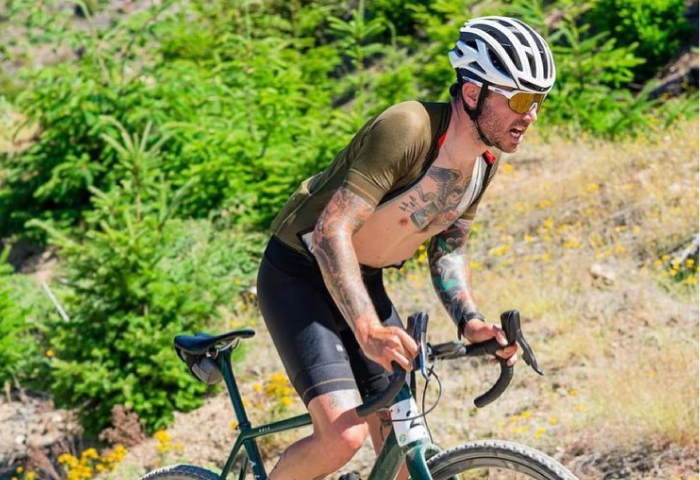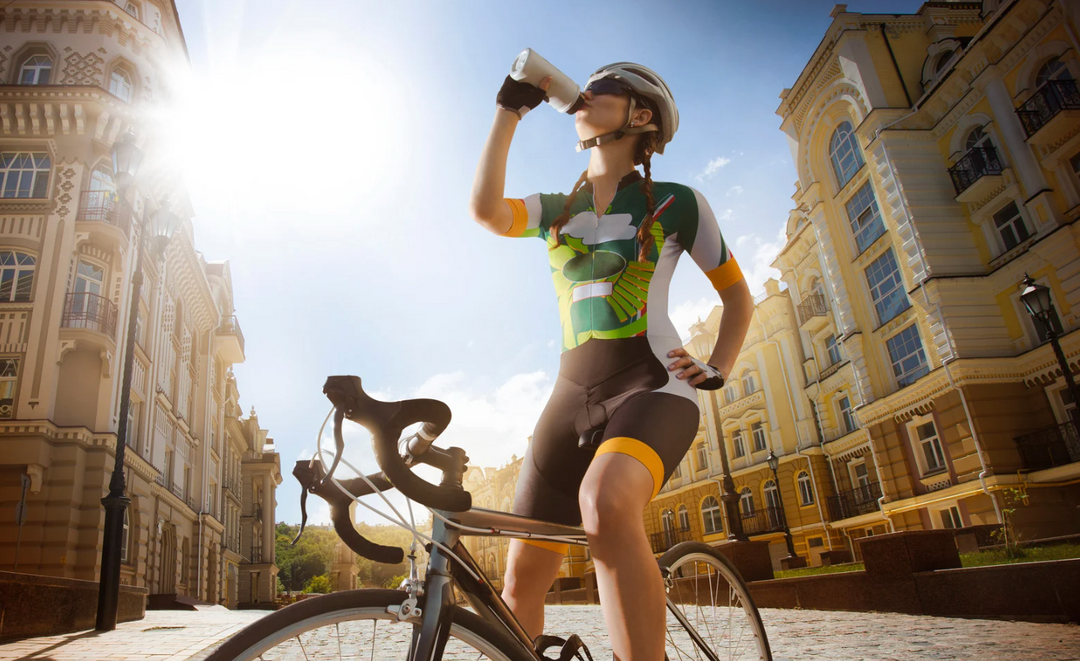Warmer Weather Nutrition
Today's #TheWerk post is brought to you by Marni Sumbal (@trimarni). Marni is a Board Certified Sport Dietitian holding a Master of Science in exercise physiology. She is the owner of Trimarni coaching and nutrition, the author of 3 books, and a 19x IRONMAN finisher (six times at the IRONMAN World Championship). Marni lives in Greenville, SC with her husband Karel, 4 cats and 16-year old dog Campy.
-----------
Warmer weather sport nutrition – don’t wait until it’s too late.
Whereas in the cold/cooler months of the year, you can get away with haphazard fueling and hydration strategies, now is the time in the year when a poorly planned (or no) fueling/hydration regime will negatively impact your training sessions, race day readiness and mental and physical health.
Let it be known that training in the heat is incredibly stressful for the body. Although you may not be experiencing “summer” temperatures, a rise in temperature brings more stress to your body. Seeing that training (in any environment) already creates difficulty for the body to adequately digest and absorb nutrients and fluids, you can imagine why so many athletes experience uncomfortable health issues, GI struggles and extreme fatigue when the weather gets warmer.

To keep your body functioning well, it's extremely important that you do not let your fueling/hydration regime become a game of guessing.
Can you relate to any of the following?
-Not staying well-hydrated on a daily basis (before/after workouts and during the day)
-Not bringing along fluids when running (especially off the bike)
-Not comfortable drinking while running/riding
-Rationing fluids to avoid stopping (or not enough places to refill bottles)
-Not enough hydration bottle cages on the bike (or if they are on, they aren't easily accessible/reachable)
-Intentional under-eating/under-fueling
-It's only a "short" workout and you feel you don't need it
Common side-effects of not fueling and hydrating properly:
- headache
- dizziness
- blurred vision
- loss of focus
- extreme fatigue
- deep muscle soreness during or after workouts
- chills
- no appetite post workout
- excessive sleepiness
- extreme weakness
- cessation of sweating
- dry mouth
- dark urine
- dry skin
- no/little urination
- extreme cramping
- bloating/puffiness
- excessive thirst/lost of thirst
- rapid, elevated pulse (despite effort slowing down)
- muscle spasms (during and post workout)
Are you currently experiencing any of the above? If yes, your current fueling/hydration strategy is NOT working for you.

To help you out, here are a few very simple tips to keep your body well-fueled and hydrated in spring… before it gets really hot out.
- Be sure to have a sport drink with you for all workouts lasting more than one-hour - this should contain a mixture of electrolytes, carbohydrates and fluids in an appropriate concentration to digest well and to be efficiently absorbed. I suggest a hypo or isotonic solution with no more than 10-14g carbohydrates per 8 ounces and at least 120mg of sodium per 8 ounces to optimize gastric emptying.
- For intense or very sweaty/hot workouts lasting 45 min - 1 hour, you should still use a sport drink with at least 10g carbohydrates per 8 ounces and at least 120mg sodium per 8 ounces. This will help you recover better and also help to train the gut.
- Aim for 24-32 ounces of fluid on the bike per hour and at least 10 ounce fluid per 10-15 minutes while running (this should be in a sport drink – ok to sip on plain water as needed).
- Aim to sip your bottle on the bike every 10-12 minutes (you need at least 3-4 gulps to ensure that you are getting in around 3-4 ounces of fluid) and 1-2 sips every 5-8 minutes while running. Frequent drinking on a schedule will help delay fatigue, minimize dehydration and reduce the risk of guzzling fluids when you stop.
- To gradually acclimate to warmer temperatures, try exercising when it’s warm but not hot. If it’s an intense workout, choose indoor workouts over outdoor to ensure that your workout quality does not get compromised. In hotter temperatures, use water/ice to cool yourself while exercising and wear a cooling towel/cooling sleeves. Choose shady areas over direct sunlight. Wear sunscreen to prevent burning.
- Always plan ahead with your bottle refill stops. Be sure to STOP before you really need to stop so you are never rationing your fluids or going without.
- Be sure you are setting yourself up for good hydration behaviors. Cages/hydration systems on the bike should be accessible and easy to use in ALL conditions (ex. bumpy roads, rain, technical courses, etc.). Your run courses in training should allow you to refill bottles that you bring with you. Everything you do in longer workouts should be practice for race day.
- Wear a hydration belt/pack so you can drink what you like to drink, when you need to drink it. There are many types on the market - find one that works for you and never run outside without it.
- Do not wait for thirst to kick in during endurance workouts/racing to start drinking. Start drinking/fueling early. An athlete who waits to drink until he/she is thirsty is already behind on fluid requirements and many times, this will cause an athlete to drink an excessive amount of fluid at one time.
- Make your fueling/hydration strategy during workouts as simple as possible. You should not be using several different methods of consuming electrolytes, calories/carbohydrates/sugars and fluids. Also, DO NOT over-concentrate your flasks/bottles by making a “3-hour bottle.”
- Pace yourself and be OK with slower paces but a higher RPE. Even mild dehydration can negatively affect performance and can cause drowsiness, irritability, loss of concentration and headaches - none of which are performance enhancing or healthy.

Successful athletes know how to pace an effort so that nutrition/hydration is helping to fuel and hydrate the effort. If you overwork your body, it is not possible to over-fuel and over-hydrate the body to meet your training/racing demands.
You need to be respectful to your body in the heat. If you are feeling any changes with your body that concern you, first slow down and if you continue to feel off, don't be afraid to stop. Remind yourself that when your body starts to shut down or gives you signals/signs that something is wrong (ex. headache, chills, vision changes, etc.), your body is trying to protect you. Never get upset at your body when it is trying to help you so that you don’t suffer from a serious heat related illness.
There are far too many athletes failing with workouts and experiencing negative health issues from poor fueling/hydration strategies before/during/after training when the weather gets warmer. Sport nutrition is a complicated area with many misguided tips and suggestions that are not always practical or healthy. If you know someone who can benefit from this article, please share.
If you enjoyed this article and would like more information on proper triathlon nutrition, check out trimarnicoach.com for more information.








Leave a comment